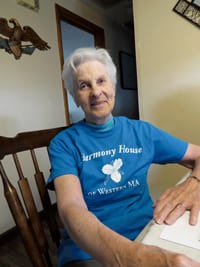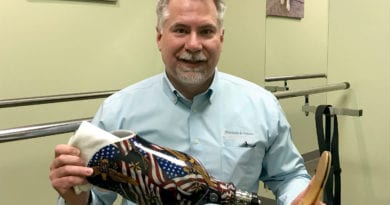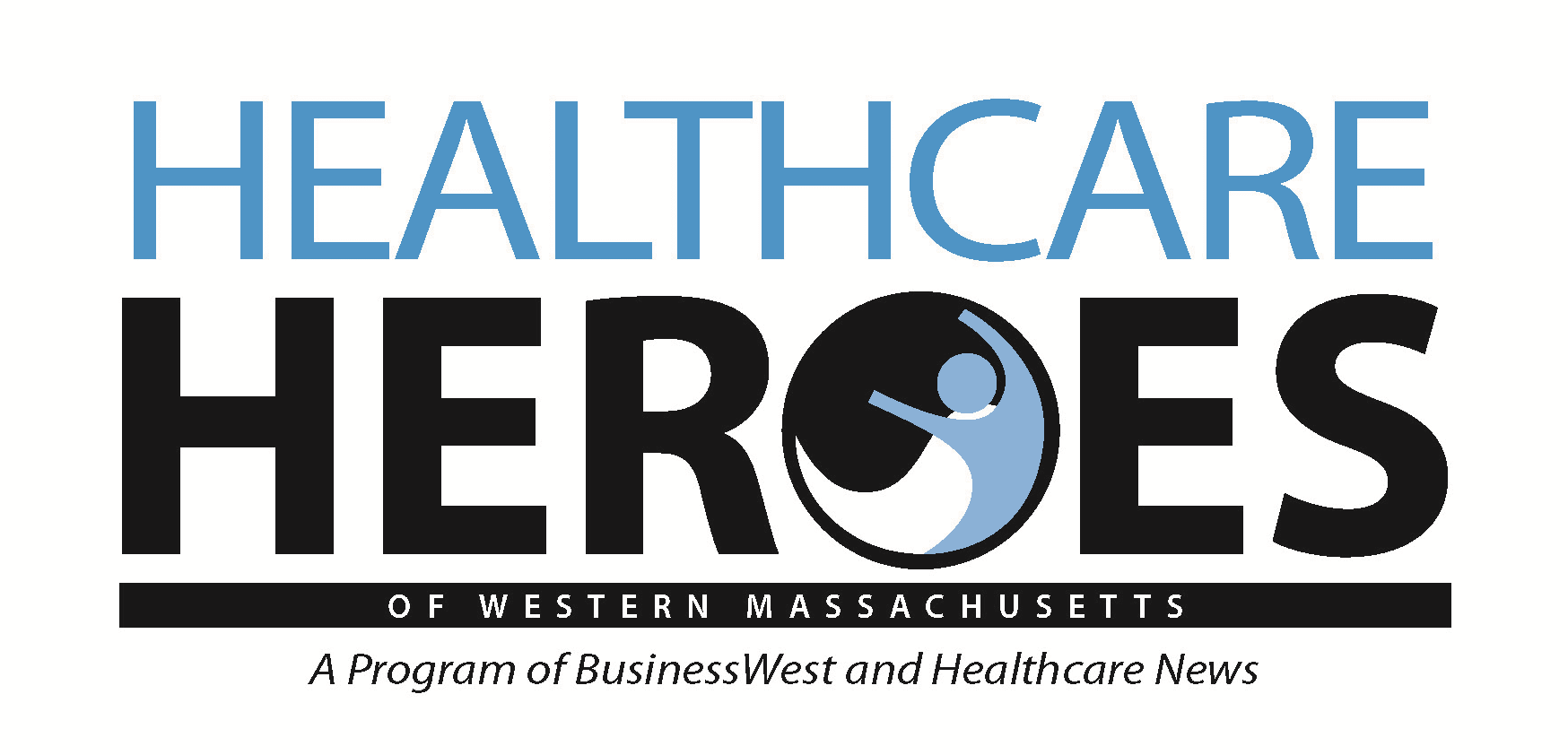A Home for the Dying Finds Life – Harmony House Is an Exceptional Woman’s Dream Come True
Almost since the day she retired from teaching, Ruth Willemain has been providing hospice care as a volunteer.
And almost from the day she started that second career, she began thinking about ways to provide more and better care to those who don’t have what would be considered a traditional support system as they contend with daunting end-of-life issues and emotions.
It was a poignant, heartfelt plea from one of those who came into her care that, in many respects, turned thought into truly inspirational action.
“This woman said, ‘Ruth, would you please come to my funeral — I don’t want to be alone in the church,’” Willemain recalled, adding that as she pledged to honor that request she understood even more fully that much more was needed for such people than her presence at that service.
So began a decade-long adventure, if you will, that has tested her in more ways than she could have imagined, but also left her fulfilled in ways that few could likely understand.
“It’s been a journey,” said Willemain, using that word for the first of many times. “It’s been 10 long years — I’ve learned many lessons along the way and met many wonderful people.”
This journey is the story of Harmony House, and while getting to here — meaning the grand opening of this unique home — is a great accomplishment in itself, this is really just the first chapter.
Indeed, the small, nondescript, three-bedroom ranch home on Pendleton Avenue in Chicopee is intended to be only a temporary home for Harmony House, with a much larger, six-bedroom dwelling a few miles away eyed as a better, more permanent solution. Meanwhile, opening the home is only the first of many tests; there will be a constant need for volunteers, meals, supplies, and, of course, funding.
But more on all that later.
That ranch house is almost indistinguishable from the dozens of others like it on this quiet street off Memorial Drive — until one ventures inside.
Even then, aside from scattered medical equipment, it looks like a typical home — which is exactly the point. In fact, when this writer referred to it as a ‘facility,’ Willemain recoiled and delivered a rather direct lesson in healthcare terminology — at least her take on it.
“This isn’t a facility — it’s a home,” she said, meaning a home for people who don’t have a home or don’t have anyone who can care for them in their home.
To be more specific, this is what’s known as a ‘social-model hospice home,’ the first in Massachusetts and probably the first in New England. As that name implies, sort of, this is a home essentially operated and funded by the community and staffed entirely by volunteers.
Willemain first experienced such a home when she traveled to Cleveland, Ohio years ago for her sister’s birthday, and was asked to pay a visit to an individual in hospice care.
“When I walked into that home, I felt like love was in the air — it was something I had never experienced before,” she explained, adding that it became her mission in life to bring that same feeling to Western Mass.
“Everything told me, ‘this is what you’re supposed to do,’” she said.
As she talked with HCN a few weeks back, Willemain was excitedly looking forward to June 20. This was the day the ceremonial ribbon was to be cut at Harmony House. The mayor had pledged to be there, and so had many area news outlets. There would be a few speeches, and many opportunities to thank what grew into an army of contributors and volunteers that made it all possible. It was to be an important day, to be sure.
But not as important, she noted, as June 26, when the first resident — a woman who had long been on dialysis and decided to end those life-prolonging treatments — would arrive on Pendleton Avenue.
“This is why we’re here — this is what we worked for more than a decade to create,” she noted. “It’s a dream come true.”
For this issue, HCN visited Harmony House and its creator to find out how it came to be, and how there are many chapters still to be written in this remarkable story.
A Dying Wish
As she posed for a few pictures for HCN, Willemain, ever the marketer and fund-raiser as well as the visionary and care provider, quickly added a layer to her outfit — a Harmony House T-shirt, complete with the nonprofit’s very carefully chosen logo.
This would be the trillium flower, and the explanation behind its choice as a symbol for this endeavor goes a long way toward shedding needed light on the home’s mission and how it will go about carrying it out.
Indeed, the three purple petals on the trillium flower represent the three areas of support provided by Harmony House — physical, emotional, and spiritual. And the three sepals represent the three groups of people who will supply that support — hospice teams, support staff, and volunteers.
But to fully explain Harmony House and all that went into its creation, one needs to go well beyond the logo.
For that, we need to turn the clock back to 1999, when Willemain was wrapping up a 45-year career in teaching — one that included stops in New York, Connecticut, and Michigan — at Tatham Elementary School in West Springfield.
“I knew that after teaching I wanted to do something to serve others,” she told HCN, adding that ‘something’ became hospice care, a unique form of healthcare devoted to those who are terminally ill. “I did the training, became a hospice volunteer, and have never been without a patient since.”
As noted earlier, Willemain provided such care for years before embarking on her mission to meet what she saw as an emerging need within this region: to serve those who are — in most ways or all ways — alone as they confront the end of their life.
And there are more individuals in this category than most would think, she said, adding that she knows this from her 16 years of experience as a hospice volunteer.
“Many of the people I cared for didn’t have company,” she noted. “They would say, ‘Ruth, if you didn’t come visit me, I wouldn’t have any company at all.’”
She said this was the case both for people in their homes — if their spouse or other caregiver wasn’t able to care for them — and those in nursing homes.
“For those placed in nursing homes, they were always in a room with a roommate,” she went on. “And there were many times when the roommate would say, ‘no one ever comes to visit me … would you visit me as well?’”
Over the years, Willemain would spend five, six, and sometimes seven days a week visiting those who didn’t have anyone else to visit them. It was immensely rewarding work — “most were just so happy that you found some time to give them some joy” — but also somewhat frustrating.
And such experiences, and especially that woman’s plea to attend her funeral, led Willemain to begin creating that vision for a home that such people could come to.
“This is what broke my heart — I left the nursing home with tears rolling down my cheeks,” she said of that dying woman’s request. “I said, ‘God, we’ve got to do something.’”
As she began her mission to create a home for those in need of such services, Willemain recalls that there were many doubters, those who thought her vision was laudable but the goal was out of reach.
She listened, but preferred to focus on those who said this would no doubt be challenging, but certainly doable. And they were right.
She started raising money through sales of candy bars and other means, and along the way gathered both supporters and momentum for the social-model hospice home, a concept that certainly needed to be explained because of its uniqueness, even if it isn’t exactly a new concept.
Indeed, as Dr. Karen Wyatt, author of What Really Matters: 7 Lessons for Living from the Stories of the Dying, explains in a recent blog post advocating for this model, it can trace its roots to the AIDS epidemic of the ’80s.
“The first social hospices were created to house AIDS patients as they were nearing end of life and in desperate need of terminal care,” she wrote. “Many of these were literally private residences with multiple bedrooms where a number of patients could be cared for and comforted through the dying process.”
Upon reviewing the current landscape and future issues surrounding end-of-life care, Wyatt noted that the social-model hospice homes may offer solutions to many of the problems she believes lie ahead. They include:
- A shortage of family caregivers: Wyatt noted a study referenced by the AARP Public Policy Institute predicting there will be a severe shortage of family caregivers as the Baby Boom generation ages and faces end of life. While there are currently seven potential caregivers for every patient, the study noted, this ratio is expected to drop to 3 to 1 by 2050.
- A shortage of paid caregivers: Wyatt cited a study published in Health Affairs indicating that at least 2.5 million more long-term-care workers will be needed to look after older Americans by 2030. Social-model hospice homes, she noted, are offering certified training with continuing-education credit for professional caregivers for the terminally ill. These programs will increase the number of workers available to meet the long-term needs of society.
- Need for family respite: Wyatt noted that the Institute of Medicine’s 2014 report “Dying in America” points to a current need for respite and support for family caregivers to help avoid burnout and resulting emergency hospitalizations.
- Cultural barriers to hospice care: Wyatt referenced comments from Dr. Donald Schumacher, president and CEO of the National Hospice and Palliative Care Organization, who stated in a published interview that cultural barriers to hospice care needed to be addressed in the future. These barriers include a lack of cultural diversity in hospice staffs, mistrust of the healthcare system, and worry about insurance coverage and cost of care. The social-model hospice home has the potential to overcome some of these barriers by utilizing volunteers and caregivers from the patient’s own cultural group and neighborhood by functioning largely outside the healthcare system.
- A reduction in Medicare payments for hospice and home care: That Institute of Medicine report mentioned above also indicates that hospice payments from Medicare will be reduced by 11.8{06cf2b9696b159f874511d23dbc893eb1ac83014175ed30550cfff22781411e5} over the next decade, which will likely create financial stress for smaller hospices and lead to decreased access to care.
At Home with the Idea
While Wyatt uses the future tense as she makes her case for the social-model hospice home, Willemain notes that some of these issues are already manifesting themselves.
And in that respect, Harmony House is somewhat ahead of its time, she noted, adding that the home itself, and the model of care to be delivered, have both been designed to maintain a peaceful atmosphere of respect and compassion that honor the dignity of each resident.
This is the essence of hospice care, she went on, adding that this is in many ways an acquired skill, one that involves thoroughly understanding the individual and what they want and need as they confront the end of their life.
“We just want to do whatever they would like us to do for them,” she explained. “For some, it’s simply holding their hand; for others, it’s playing a game with them. It all depends on the individual and what stage they’re at in their lives.”
This is what Willemain wanted to bring to Harmony House, and after years of moving the process forward, she was close to realizing the dream in a large home on View Street in Chicopee. But several legal issues arose concerning that property, which was in foreclosure, she noted, adding that a local family donated the vacant house on Pendleton Avenue to enable Harmony House to open its doors.
That home needed a large amount of work to meet its new purpose, and it received help from a large group of individuals and businesses that handled everything from new wiring to landscaping to the building of a wheelchair ramp.
As Harmony House opens its doors, it is providing what amounts to a home and a surrogate family in the form of trained staff and volunteers who will provide care around the clock.
The home is intended for individuals diagnosed with a terminal illness who have a maximum of three months to live and are under the care of a hospice services provider, which will administer those services at Harmony House instead of a nursing home or other facility.
Care will be delivered by licensed nursing caregivers, food-service personnel, and administrative assistants, but the hallmark of the home will be that around-the-clock volunteer service.
Each volunteer will work one eight-hour shift a month, meaning there will be a need for more than 90 such individuals, said Willemain, adding that assembling this team of volunteers has been just one of many challenges facing organizers, and the work continues.
It takes many forms, everything from the training of volunteers to recruiting of individuals, families, and restaurateurs to cook meals, to raising the estimated $4,000 a month it will take to pay for a host of expenses, including insurance, utilities, snow plowing, and much more.
To meet these needs, administrators are turning to the community and inviting people to support the home in any way they can. A full wish list of needed items — everything from personal-care items to a small TV for one of the bedrooms — is on the home’s website, harmonyhousema.org, for example.
In addition, a meal-a-month program has been launched. It invites churches, families, restaurants, and individuals to follow the lead of Jack Ng, owner of Gnow’s Place in Chicopee, and commit to providing a meal for four to six people each month.
Willemain said the response from the community has been overwhelming, but the need for help will be constant, and will, therefore, pose a stern challenge.
But the need for the Harmony House is real, she said, and she believes the community can and will support the home and its mission.
Final Thoughts
As she talked about Harmony House, the care to be provided there, and her own lengthy career as a hospice volunteer, Willemain said she was probably due for a refresher course in this blend of science, art, and especially compassion.
“So much has changed over the years, including HIPAA and everything else,” she said, adding that she made a point of making sure her training was up to date and up to speed.
What else would one expect from someone who first made hospice care a second career, then made it a passion, and then created and fulfilled a vision to take such care to a new, cutting-edge level?
A level, specifically, where individuals won’t be alone in the church after they die, or, more importantly, during those last few months before they die.





Comments are closed.